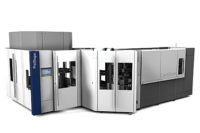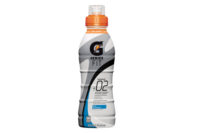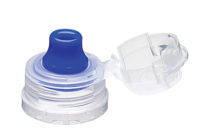Getting plastic bottles into shape
Blow molding machinery offers cost, energy savings






In the competitive beverage industry, innovation is key. In the last few years, companies have developed new categories, such as coconut waters, aloe-infused drinks and relaxation beverages. Because formulations like these are so creative, oftentimes their packaging must be, too.
When it comes to bottle shapes, a variety of options are available for beverage-makers. From selecting a specific blow molding machine to fit a product’s needs to seeking out speed to bringing the plastic bottle manufacturing equipment in-house, beverage-makers have plenty of production options.
It’s this flexibility that’s driving the future of plastic bottle manufacturing. And in the passenger seat is environmental impact.
“Blow molding machines must allow marketing freedom to bottlers in order to enable a wider differentiation in terms of packaging design and product segmentation,” says Sidel Group Communications for Sidel, Norcross, Ga. This also means bigger flexibility and compatibility with new types of resins, such as those containing a percentage of recycled materials, it adds.
Similar to many other industries, machinery suppliers need to be concerned with their product’s sustainability, or environmental impact. According to Sidel, when it comes to plastic bottle manufacturing, it sees a trend toward reducing energy use and improving the performance of the equipment in terms of energy, such as reducing blow molding pressure and optimizing ovens.
For instance, Sidel’s SBO Universal and SBO Universal 2 rotary machines consume up to 45 percent less power because of a new oven configuration that uses fewer lamps per module and fewer heating modules, the company says. Optimized oven efficiency helps to decrease heating time by 15 percent, it adds.
But today’s customers aren’t only seeking flexibility and sustainability. They want the whole package, and that means reducing costs.
Overall, one major trend is in customers looking to get a better cost of ownership, says Marco Bottecchia, president of SIPA North America Inc., Atlanta. The demand for machinery to perform at higher speeds will continue, he says, but in the near future, a demand for lower maintenance costs also will arise.
“In the next year or so, I’m expecting reducing the energy consumption — less air, less electrical power, less utilities in general, and less cost for maintaining the machines,” Bottecchia explains.
The reduction of maintenance costs leads to the need for increased simplicity in managing the system, he says. In the past, blow molding machinery was something only specialty technicians could operate. Now, operating the machinery is becoming much easier, which has aided the trend toward in-house, or self manufacturing, he says.
“When you bring [plastic bottle manufacturing] in house, self-manufacturing companies say they can control their own destiny in cutting cost. Logistics and material savings in bottle weights substantially reduced the conventional converter cost,” says David Raabe, director of blow molding for North America and key accounts for the converter business in North America at Krones Inc., Franklin, Wis.
During the last 15-plus years, this industry mainly consisted of converters that dealt with increasing costs in resin material, transportation and the logistics of getting their product to the customers on time, Raabe says. Therefore, beverage-makers and bottlers have begun to explore self-manufacturing as an in-house operation solution.
Sidel says that in order to know whether it is relevant or not to invest in in-house manufacturing equipment, several criteria linked to blow molding technology must be considered upstream, such as the available space within the plant, production volumes justifying return on investment, the expected flexibility on packaging, the technical know-how, the raw material supplying and associated costs among other concerns. The evaluation of those criteria will enable a company to define the total cost of ownership that will confirm, or not, the interest to produce polyethylene terephtalate (PET) bottles in house, Sidel says.
Within the last eight years, the industry has seen major progress in efficiency and lower cost to the bottom line thanks to self-manufacturing, says Krones’ Raabe.
“In the water industry, we’ve seen lighter water bottles over the years with reduction in media consumption and increasing their understanding of the total cost of ownership,” Raabe says.
Last year, Krones developed a few new platforms, such as its C3 platform that can run 2,250 containers per cavity with lower media consumption and many new features. The other platform is its Pro-Shape technology that enables molding of non-round bottles as large as 2 liters with speeds higher than its competitors, Raabe says.
“As Krones has increased these bottle output speeds for our customers, this allows new opportunities for them to reduce their capital investment to a smaller platform. This reduces the amount of mold tooling and changeover time, enhancing their advantages,” Raabe explains. “As a result, there is a cost savings.”
Noteworthy Machinery
Over the years, to increase efficiency and convenience for self-manufacturing, Krones has combined a blow molder and filler, called its blow fill bloc solution, as one platform. In addition to this concept, in 2009, Krones provided a new solution called Ergo bloc that consists of a blower, labeler and filler all-in-one to reduce operation cost and carbon footprint, the company says.
Nestlé Waters North America’s Hawkins, Texas, plant uses Krones’ Contiform stretch blow molder for its 500-ml. bottles. Originally designed to handle 60,000 bottles an hour, the Contiform machine at the Nestlé plant is capable of producing PET containers at 64,000 bottles an hour, the company says.
SIPA’s injection and blow molding technology is compatible with its own machines and also its competitors’ machines, SIPA’s Bottecchia says.
In the North American market, the company’s two most noteworthy machines are the ECS Integrated System and the SFL Linear Blowmolder. The ECS Integrated System is an uninterrupted, automated process from resin to finished container. The system produces up to 600 bottles a minute, and a “Flex” version allows the machine to manufacture large capacity containers up to 30 liters in volume or with a neck as large as 135 mm. by reducing the machine’s cavitations, the company says.
SIPA also offers a linear blower, which Bottecchia says “is a simple, linear technology blowing machine, so from pre-form to bottle, that has received an excellent acceptance from the market.”
The advantages of this stretch-blow electrical molding process are production speeds as fast as 1,800 bottles an hour per cavity, low energy consumption and clear production, versatility, ease of use, reliability and low maintenance, the company says.
SIPA offers a variety of different blow molding machines to suit consumer needs for all beverage and packaging types. Its machines can handle any type of beverage, such as soft drinks, mineral water, juice, beer, etc., but each beverage comes with a set of challenges. Beer, for example, is very sensitive to oxygen. It requires an ultra clean bottle with a very good oxygen barrier, light barrier and aroma and alcohol barrier, the company says. Additionally, because of the pressure involved with carbonated soft drinks, bottles must have the ability to maintain their shape and resist bursting because of pressure or impact.
“When we are talking about … water or a carbonated soft drink, in that specific case, the suggestion is a blower and, typically, we are suggesting a rotary blower because it uses the right machine for matching the volume required in the specific application,” Bottecchia says. “Depending on the product, we can provide the better solution.”
SIPA also is aiming to provide more compre-hensive solutions for its consumers moving forward.
“We have the capacity to provide a turnkey solution that could include not only the plastic bottle production, but also the filling and secondary packaging,” Bottecchia says. “Several other companies are working these directions — SIPA’s one of them. We are pushing hard in that direction to be a solution provider.”
Offering another turnkey solution in the beverage industry is KHS USA Inc., Sarasota, Fla. The company’s InnoPET BloFill machine combines the InnoPET Blomax high-speed stretch blow molder with Innofill fillers and cappers. The InnoPET BloFill is available in a range of eight to 24 blow mold stations with an output of up to 43,200 bottles an hour, the company says. The machine can produce many different sizes and shapes of bottles with low total operating costs thanks to high levels of availability combined with low levels of energy and material consumption, the company says.
KHS’ InnoPET Plasmax 12D is ideal for sensitive products such as juices, carbonated beverages, beer and wine because it prevents the permeation of carbon dioxide and oxygen through the wall of the PET bottle thus increasing the shelf life of the beverage, according to the company. The machine applies a wafer-thin, fully transparent silicon oxide coating to the inside wall of a PET bottle, giving it nearly the same barrier characteristics as a glass bottle, the company adds.
Sidel, on the other hand, is working to adhere to the success of PET material in the packaging industry, the company says. Its machinery also can produce recycled PET, BioPET, polypropylene (PP), polylactic acid (PLA) and stretch-blow molded high density polyethylene (HDPE) bottles. The company’s portfolio of blow molding machines include linear machines that produce up to 7,200 bottles an hour and rotary machines that run from 12,000 to 64,600 bottles an hour, it says.
The ranges of Sidel’s SBO machines, which use the bi-orientation technology principle, include the SBO Compact, SBO Universal, SBO Universal 2 and SBO Highspeed. The SBO Universal and SBO Universal 2 machines can either run in standalone configuration or be integrated into a complete bottle-filling production line. Similarly, the SBO Highspeed can be incorporated into packaging lines with one- or two-line bottle exit. BI
Looking for a reprint of this article?
From high-res PDFs to custom plaques, order your copy today!









